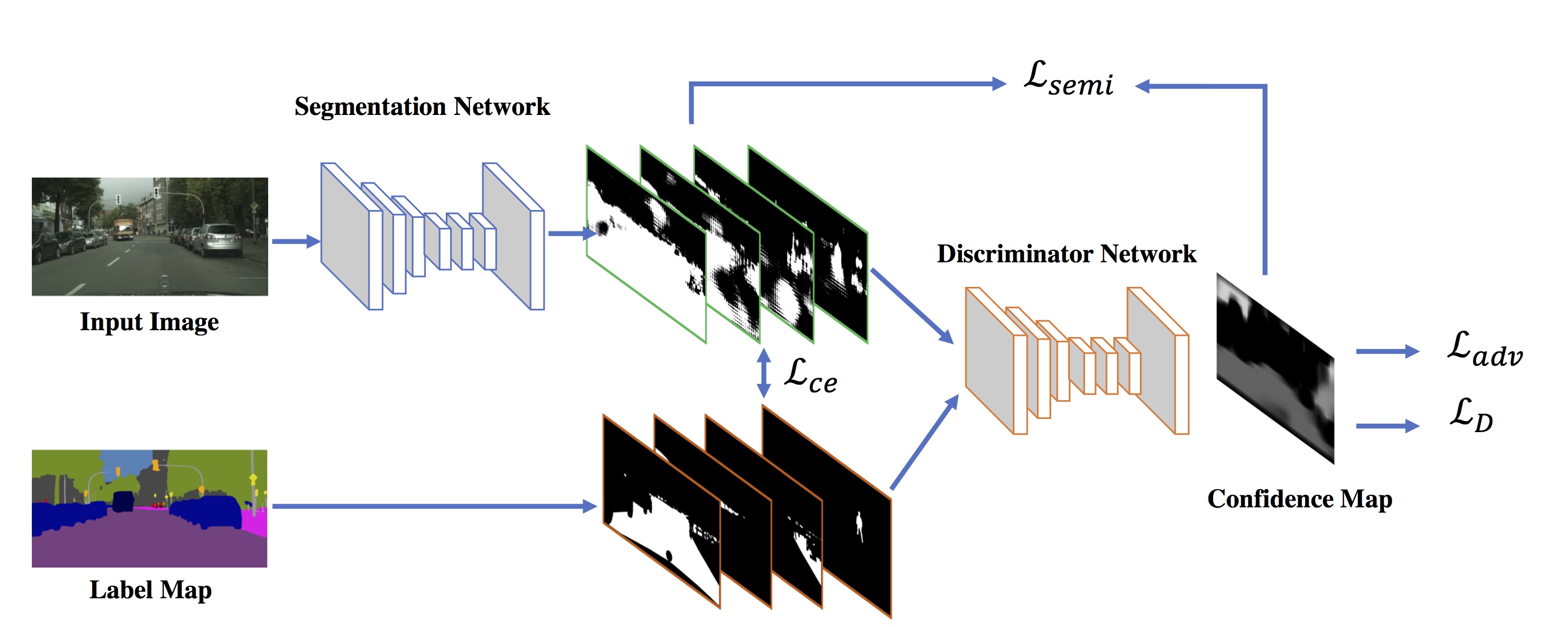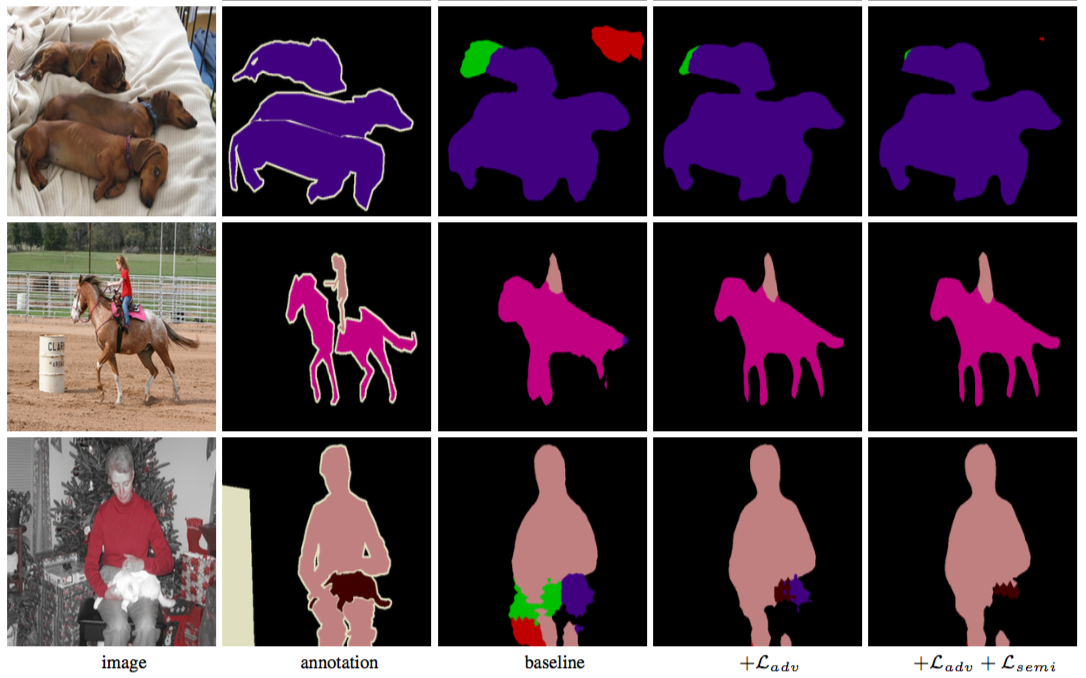hfslyc / Advsemiseg
Programming Languages
Labels
Projects that are alternatives of or similar to Advsemiseg
Adversarial Learning for Semi-supervised Semantic Segmentation
This repo is the pytorch implementation of the following paper:
Adversarial Learning for Semi-supervised Semantic Segmentation
Wei-Chih Hung, Yi-Hsuan Tsai, Yan-Ting Liou, Yen-Yu Lin, and Ming-Hsuan Yang
Proceedings of the British Machine Vision Conference (BMVC), 2018.
Contact: Wei-Chih Hung (whung8 at ucmerced dot edu)
The code are heavily borrowed from a pytorch DeepLab implementation (Link). The baseline model is DeepLabv2-Resnet101 without multiscale training and CRF post processing, which yields meanIOU 73.6% on the VOC2012 validation set.
Please cite our paper if you find it useful for your research.
@inproceedings{Hung_semiseg_2018,
author = {W.-C. Hung and Y.-H. Tsai and Y.-T. Liou and Y.-Y. Lin and M.-H. Yang},
booktitle = {Proceedings of the British Machine Vision Conference (BMVC)},
title = {Adversarial Learning for Semi-supervised Semantic Segmentation},
year = {2018}
}
Prerequisite
- CUDA/CUDNN
- pytorch >= 0.2 (We only support 0.4 for evaluation. Will migrate the code to 0.4 soon.)
- python-opencv >=3.4.0 (3.3 will cause extra GPU memory on multithread data loader)
Installation
- Clone this repo
git clone https://github.com/hfslyc/AdvSemiSeg.git
- Place VOC2012 dataset in
AdvSemiSeg/dataset/VOC2012. For training, you will need the augmented labels (Download). The folder structure should be like:
AdvSemiSeg/dataset/VOC2012/JPEGImages
/SegmentationClassAug
Testing on VOC2012 validation set with pretrained models
python evaluate_voc.py --pretrained-model semi0.125 --save-dir results
It will download the pretrained model with 1/8 training data and evaluate on the VOC2012 val set. The colorized images will be saved in results/ and the detailed class IOU will be saved in results/result.txt. The mean IOU should be around 68.8%.
- Available
--pretrained-modeloptions:semi0.125,semi0.25,semi0.5,advFull.
Example visualization results
Training on VOC2012
python train.py --snapshot-dir snapshots \
--partial-data 0.125 \
--num-steps 20000 \
--lambda-adv-pred 0.01 \
--lambda-semi 0.1 --semi-start 5000 --mask-T 0.2
The parameters correspond to those in Table 5 of the paper.
To evaluate trained model, execute the following:
python evaluate_voc.py --restore-from snapshots/VOC_20000.pth \
--save-dir results
Changelog
- 07/24/2018: Update BMVC results


